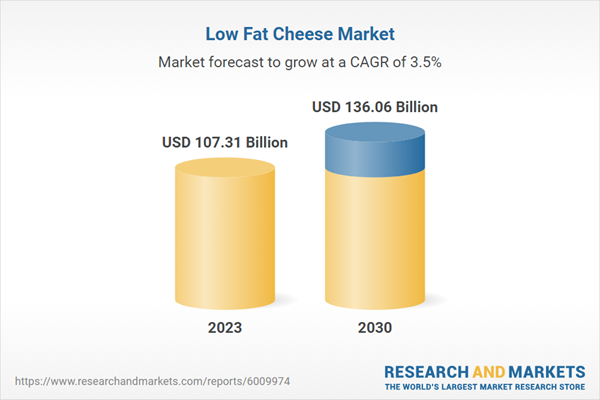According to the WHO, in 2016, over 340 million children and adolescents aged between 5 to19 years were reported overweight. Obesity is a growing concern amongst children, especially in regions such as APAC and North America. As a result of this, many global fast food vendors such as McDonald’s and Starbucks are promoting the food segments using low fat cheese such as ricotta, feta, and mozzarella as main ingredients to serve healthy products and retain the customer base.
Actors, celebrities, and bloggers across the globe have been seen endorsing healthy cuisines using low fat and low calories dairy products such as skinny baked mozzarella sticks and cheesy baked zucchini noodle casserole over social media such as Instagram and Facebook. This has resulted in growing health concerns and greater consumption of low fat cheese among the consumers.
Ricotta held the largest share of 34.3% in 2018. Ricotta is a variant that is mainly produced from cow’s milk. The texture of ricotta varies between soft and dry. Salted varieties including smoked cheese are profusely used in kitchen, whereas the unsalted types such as baked ricotta are consumed directly as appetizers or desserts.
Mozzarella sticks is the fastest growing product category, expanding at a CAGR of 4.0% over the forecast period. This growth is largely attributed to rapidly growing fast food business worldwide. Moreover, mozzarella sticks are considered to be a healthy low fat snacking cheese. These sticks are usually labeled with ‘part-skim’ tag and are a source of 6 grams of fat, along with 7 grams of protein, 86 calories, and more than 200 milligrams of calcium. Shredded mozzarella processed from part-skimmed milk is a popular choice for consumers as it melts easily over homemade pizza or grilled cheese sandwich. For instance, in 2017, Domino’s launched its first ever low fat variant of mozzarella in Australia, where the fat content was reduced by 25% after four years of extensive R&D in the same.
The store-based channel held a leading share in the market. This category includes hypermarkets and supermarkets, convenience stores, grocery shops, mixed retailers, food specialists, and independent small grocery stores. The store-based channel offers one-stop experience to customers. However, adoption of technology by consumers is increasing due to sale of low fat cheese via online distribution channels such as Grofers and Big Basket.
Europe held the largest share in 2018, followed by North America. Demand for low fat cheese is expected to boost in Europe due to booming fast food industry and rising consumer awareness. APAC is projected to expand at the fastest CAGR of 4.4% over the forecast period. The expected growth is attributed to high fast food consumption in the region, along with increased disposable per capita income in countries such as India and China.
Some of the key players operating in the global low fat cheese market are like DSM; Crystal Farms; Lactalis Group; Arla Foods; Kraft Foods Group, Inc.; Amul; Bongrain; and Britannia Industries. Companies are focusing on introducing new variants of low fat cheese in their dairy food segment to tap the growing health conscious consumers. For instance, Arla Foods have expanded its Arla brand portfolio with the launch of Arla Quark to promote low fat and tasty alternatives for ingredients such as ricotta, mascarpone, and other soft cheese.
Low Fat Cheese Market Report Highlights
- Ricotta dominated the market and accounted for a market revenue share of 34.1% in 2023. Ricotta cheese naturally contains lower fat levels than many other cheese varieties.
- Mozzarella sticks segment is anticipated to register the fastest CAGR of 3.7% during the forecast period.
- Retail accounted for the largest market revenue share in 2023. Consumers prefer the ease of purchasing groceries from supermarkets, hypermarkets, and convenience stores where a wide range of low-fat cheese options are readily available.
- Europe low fat cheese market accounted for the largest market revenue share of 34.3% in 2023. Cultural preferences and culinary traditions in Europe have influenced the growth of the low-fat cheese market.
The leading players in the Low Fat Cheese market include:
- Kraft Heinz Company
- Dairy Farmers of America
- Nestlé S.A.
- Danone S.A.
- Arla Foods
- Amul Limited
- Arla Foods, Inc.
- Lactalis Group
- FrieslandCampina
- Unilever N.V.
Why should you buy this report?
- Comprehensive Market Analysis: Gain detailed insights into the global market across major regions and segments.
- Competitive Landscape: Explore the market presence of key players worldwide.
- Future Trends: Discover the pivotal trends and drivers shaping the future of the global market.
- Actionable Recommendations: Utilize insights to uncover new revenue streams and guide strategic business decisions.
This report addresses:
- Market intelligence to enable effective decision-making
- Market estimates and forecasts from 2018 to 2030
- Growth opportunities and trend analyses
- Segment and regional revenue forecasts for market assessment
- Competition strategy and market share analysis
- Product innovation listing for you to stay ahead of the curve
- COVID-19's impact and how to sustain in these fast-evolving markets
This product will be delivered within 1-3 business days.
Table of Contents
Companies Mentioned
The leading players in the Low Fat Cheese market include:- Kraft Heinz Company
- Dairy Farmers of America
- Nestlé S.A.
- Danone S.A.
- Arla Foods
- Amul Limited
- Arla Foods, Inc.
- Lactalis Group
- FrieslandCampina
- Unilever N.V.
Methodology

LOADING...
Table Information
| Report Attribute | Details |
|---|---|
| No. of Pages | 100 |
| Published | September 2024 |
| Forecast Period | 2023 - 2030 |
| Estimated Market Value ( USD | $ 107.31 Billion |
| Forecasted Market Value ( USD | $ 136.06 Billion |
| Compound Annual Growth Rate | 3.5% |
| Regions Covered | Global |
| No. of Companies Mentioned | 11 |









